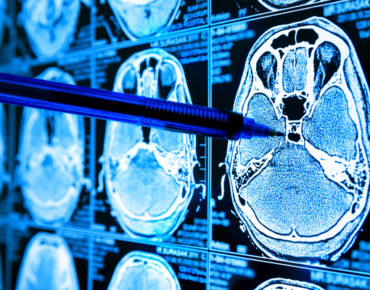Nvidia’s MONAI Medical Imaging AI Framework Now in Production

To build enterprise AI capabilities deeper into the medical imaging healthcare market, Nvidia has revealed that its Medical Open Network for AI (MONAI) open source framework is now ready for production use. MONAI arrives seven months after it was introduced at the company’s GTC 2020 event.
MONAI, which is used with Nvidia’s Clara computational platform and application framework for AI-powered healthcare and life sciences, is a PyTorch-based framework that enables the development of AI for medical imaging, according to the company. MONAI includes industry-specific data handling, high-performance training workflows and reproducible reference implementations of state-of-the-art approaches to bolster medical imaging services.
MONAI will be included in an updated Clara release and will come with more than 20 pre-trained models. That includes models recently developed for COVID-19, as well as the latest training optimizations on Nvidia DGX A100 datacenter GPUs, which were unveiled in November. Clara is a healthcare application framework for AI-powered imaging, genomics, and for the development and deployment of smart sensors. It includes full-stack GPU-accelerated libraries, SDKs and reference applications for developers, data scientists and researchers to create real-time, secure and scalable applications.
In a related move, the company also announced the launch of the Nvidia Inception Alliance for Healthcare, an initiative that aims to provide medical AI startups with the tools they need to develop their ideas. The Alliance was created with Nvidia partners GE and Nuance.
The Nvidia Inception Alliance for Healthcare aims to help members find new ways to grow through targeted networking, AI training, early access to technology, pitch competitions and technology integrations. Members will receive customized training and support to develop, deploy and integrate Nvidia GPU-accelerated apps across the medical imaging ecosystem.
Both announcements were made at the RSNA 2020 virtual event, being held through Dec. 5 by the Radiological Society of North America (RSNA).
MONAI is Helping to Transform AI Training
One of the biggest additions in the production version of MONAI is a major improvement in training, Kimberly Powell, Nvidia’s vice president of healthcare, told EnterpriseAI.
“If you think about what it is to train in one day to produce one experiment, we're reducing that to be able to do an experiment in less than an hour” using the latest MONAI release, said Powell. “So, over six times faster for experimentation and development of this kind of research.”
The MONAI framework is supported by an open source PyTorch community that features a wide range of working groups that are continuing to push the development of the platform forward, said Powell. Some 50 approved contributors are part of the effort today, with more expected in the future, she said.
MONAI is essentially a “wrapper” that’s created around the PyTorch AI training engine, said Powell.
Unlike consumer uses for PyTorch, such as Facebook, creating applications for medical data requires much more sophisticated data handling, whether it's how the data is loaded, how it is transformed or how it is augmented, she said.
“Because our data sets are smaller in medical imaging, we have to augment the data sometimes, we return it sometimes, we change the contrast, so that we can essentially give the neural network training an opportunity to see data of lots of different types so it doesn't overfit,” said Powell. “That's one thing that MONAI does incredibly well.”
This is the fourth release of MONAI since it was unveiled in April, said Powell.
“We contributed a lot of engineering time, King’s College of London contributed a lot of engineering time, to get it off the ground,” she said. “You can go back and see the roadmap of [versions] 0.1, 0.2, 0.3 and 0.4 [today], so it's really only within this year that it has existed. It's built on the shoulders of … the PyTorch giant.”
That background has led to it being called the “PyTorch of healthcare” by many experts in the field, she said.
Early access for the production version of MONAI is expected in late December.
At its Nvidia GTC event in October, Nvidia also unveiled its plans to build a new AI supercomputer – Cambridge-1 – dedicated to biomedical research and healthcare. The new system, to be located in the U.K., will deliver more than 400 petaflops of AI performance, according to Nvidia, which is investing nearly $52 million in the project.
The system is named for University of Cambridge where Francis Crick and James Watson and their colleagues famously worked on solving the structure of DNA. Leveraging Nvidia’s SuperPOD architecture, it will have 80 DGX A100s, 20 terabytes/sec InfiniBand, 2 petabytes of NVMe memory, and require 500KW of power.












